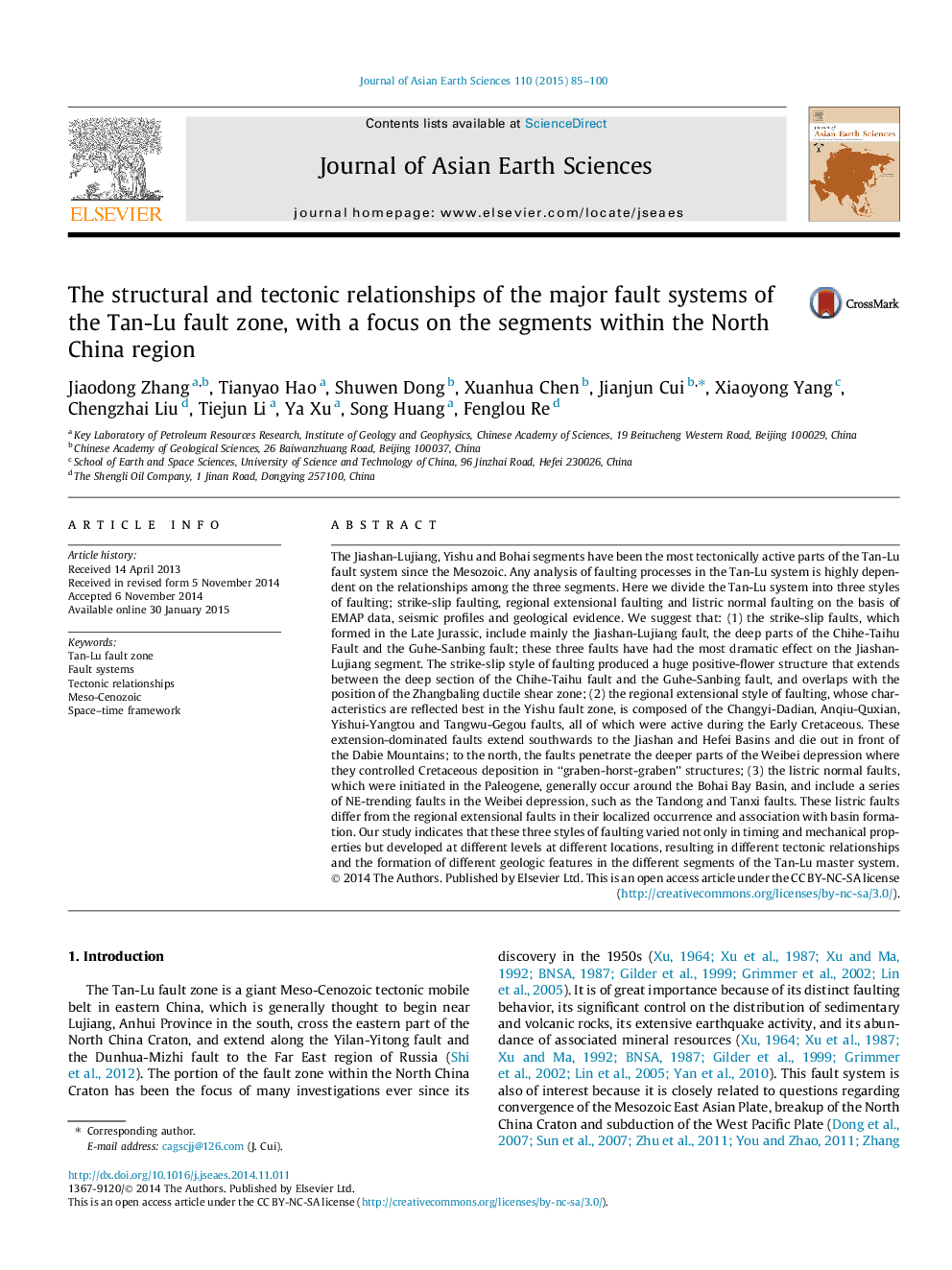| Article ID | Journal | Published Year | Pages | File Type |
|---|---|---|---|---|
| 6444101 | Journal of Asian Earth Sciences | 2015 | 16 Pages |
Abstract
The Jiashan-Lujiang, Yishu and Bohai segments have been the most tectonically active parts of the Tan-Lu fault system since the Mesozoic. Any analysis of faulting processes in the Tan-Lu system is highly dependent on the relationships among the three segments. Here we divide the Tan-Lu system into three styles of faulting; strike-slip faulting, regional extensional faulting and listric normal faulting on the basis of EMAP data, seismic profiles and geological evidence. We suggest that: (1) the strike-slip faults, which formed in the Late Jurassic, include mainly the Jiashan-Lujiang fault, the deep parts of the Chihe-Taihu Fault and the Guhe-Sanbing fault; these three faults have had the most dramatic effect on the Jiashan-Lujiang segment. The strike-slip style of faulting produced a huge positive-flower structure that extends between the deep section of the Chihe-Taihu fault and the Guhe-Sanbing fault, and overlaps with the position of the Zhangbaling ductile shear zone; (2) the regional extensional style of faulting, whose characteristics are reflected best in the Yishu fault zone, is composed of the Changyi-Dadian, Anqiu-Quxian, Yishui-Yangtou and Tangwu-Gegou faults, all of which were active during the Early Cretaceous. These extension-dominated faults extend southwards to the Jiashan and Hefei Basins and die out in front of the Dabie Mountains; to the north, the faults penetrate the deeper parts of the Weibei depression where they controlled Cretaceous deposition in “graben-horst-graben” structures; (3) the listric normal faults, which were initiated in the Paleogene, generally occur around the Bohai Bay Basin, and include a series of NE-trending faults in the Weibei depression, such as the Tandong and Tanxi faults. These listric faults differ from the regional extensional faults in their localized occurrence and association with basin formation. Our study indicates that these three styles of faulting varied not only in timing and mechanical properties but developed at different levels at different locations, resulting in different tectonic relationships and the formation of different geologic features in the different segments of the Tan-Lu master system.
Related Topics
Physical Sciences and Engineering
Earth and Planetary Sciences
Geology
Authors
Jiaodong Zhang, Tianyao Hao, Shuwen Dong, Xuanhua Chen, Jianjun Cui, Xiaoyong Yang, Chengzhai Liu, Tiejun Li, Ya Xu, Song Huang, Fenglou Re,
